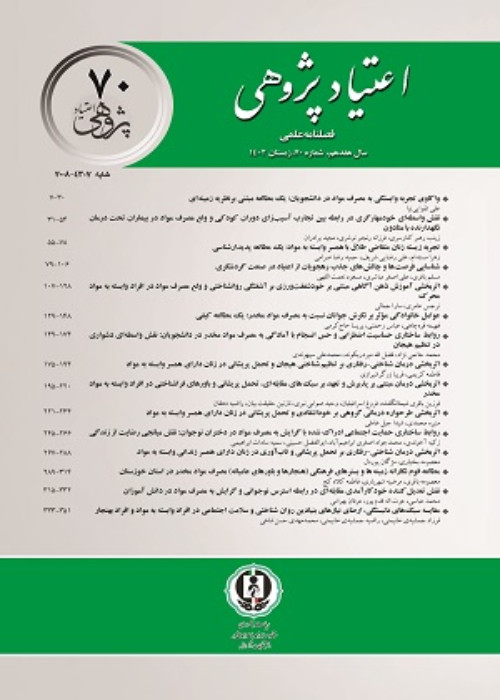Investigating the Factors Affecting Women's Trends with Addiction in West Azarbaijan Province and presentation of the solution: Quantitative-Qualitative Study
The aim of this study was to design a model of factors influencing the tendency of women to addiction in West Azerbaijan province and to provide a solution.
For this purpose, a mixed exploratory design was used and the data were collected in two qualitative and quantitative stages. In the first stage, the theoretical foundations were examined and 16 addiction specialists were individually interviewed using the qualitative method. The main and secondary categories of factors affecting women's tendency to addiction and the relationships between them were obtained during the three stages of coding qualitative data. In the next step, the original questionnaire and model were designed based on the findings of the qualitative research stage, and the model with the participation of 156 substance addicted women was tested. Quantitative data analysis was performed to identify the relationships between the factors and the generalizations of the first stage. Model fit indices were examined to evaluate the optimal fit of the data with the conceptual model that the researcher assumed based on the findings of the qualitative research stage.
The results showed 5 general categories in the paradigmatic model, {it includes cognitive factors (positive attitude towards drugs; lack of knowledge about drugs; lack of psychological health education and lack of knowledge of life skills), Psycho-behavioral factors (psychological, emotional and personality factors), social factors (peers and colleagues; place of residence and study and easy access and social insufficiency), family factors (addiction of family members (parent-sister-brother); family breakdown and family communication-educational factors), and cultural factors (promotion of drug use; culture of recreational consumption; lack of recreational and educational facilities and poor religious beliefs} were reflected factors influencing women's tendency to addiction and the relationships between its various dimensions. In the quantitative part of research model, the results of structural equation modeling showed that the structural model of the research fits with the collected data.
According to the obtained results, it can be concluded that cognitive, psychological, social, family and cultural factors play an important role in women's tendency to addiction, and this requires the presentation of educations and solutions on cognitive, psychological, social, family and cultural domains.
- حق عضویت دریافتی صرف حمایت از نشریات عضو و نگهداری، تکمیل و توسعه مگیران میشود.
- پرداخت حق اشتراک و دانلود مقالات اجازه بازنشر آن در سایر رسانههای چاپی و دیجیتال را به کاربر نمیدهد.


